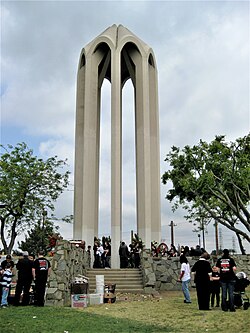A number of organizations, museums, and monuments are intended to serve as memorials to the Armenian genocide and its over 1 million victims.
Contents
Turkey has campaigned against the establishment of such memorials. In 1983, Israeli diplomat Alon Liel reported that he was told by a representative of the Turkish Foreign Ministry that "Turkey will not accept the establishment of an Armenian Memorial in Israel. Establishing such a monument would jeopardize the relations between the two countries and might push them to the point of no return." [1]



















































